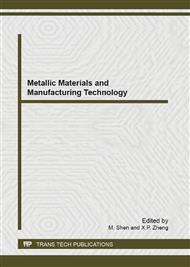p.92
p.97
p.102
p.106
p.110
p.117
p.122
p.126
p.130
Effect of Buffer Layer Thickness on Fatigue and Residual Stress of Welded High-Strength Low-Alloy
Abstract:
The present work dealt with the fatigue and residual stress (RS) effects of a soft buffer layer (BL) between the parent metal and the weld metal (WM) on welded high-strength low-alloy (HSLA) steel. Six strategies were pursued by varying BL thickness and changing U-notch position with respect to the WM in extended-compact tension specimen. The U-notch position was changed to study the effect of welding RS field, acting along the fatigue crack growth path. The welded HSLAs with BLs strategies were compared to the specimens without BLs strategies, before and after releasing RS respectively. The results demonstrated that the incorporation of a thin BL of 4 mm significantly reduced the fatigue crack growth rate (da/dN) when the RS in the welded HSLA was released by machining a U-notch in the WM. A thick BL of 10 mm was found to be beneficial to fatigue resistance when a U-notch was in the PM.
Info:
Periodical:
Pages:
110-113
Citation:
Online since:
September 2013
Authors:
Price:
Сopyright:
© 2013 Trans Tech Publications Ltd. All Rights Reserved
Share:
Citation:


